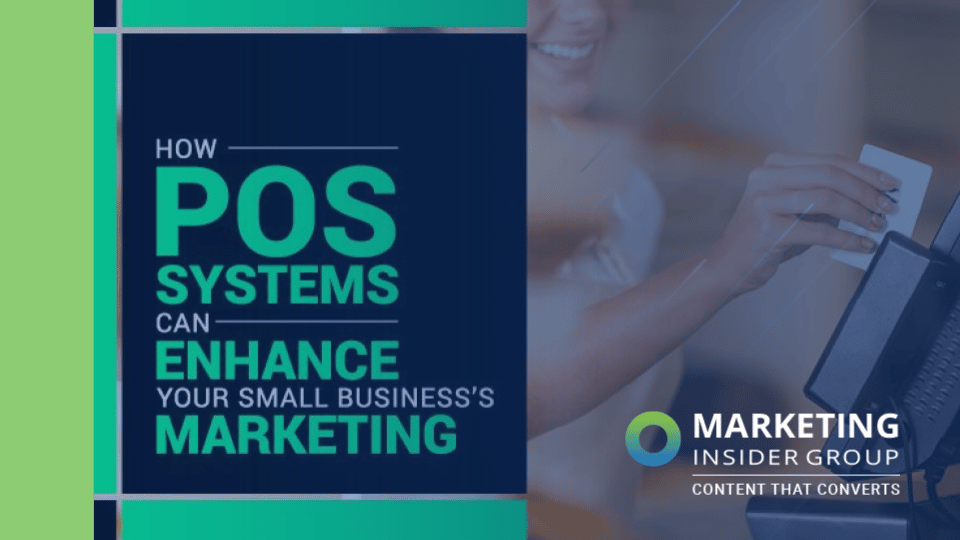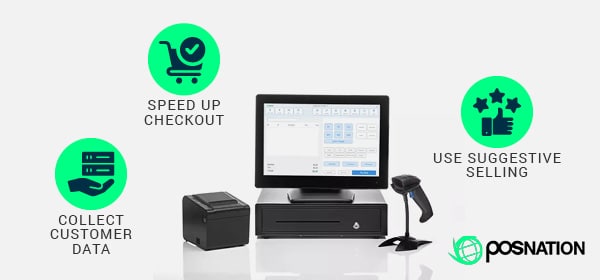
How POS Systems Can Enhance Your Small Business’s Marketing
Chances are that your small business has explored a variety of marketing strategies over the years. However, business owners can sometimes overlook ways to enhance their marketing that are right in front of them, such as their point of sale system.
Your POS system is actually not as unorthodox a marketing tool as it might first seem. Many small businesses have experimented with their POS system and marketing endeavors to find creative strategies with tangible results. And all your business really needs to join in on these benefits is a strong POS system and knowledge of a few best practices.
As a small business leader, you’re well aware of the importance of making the most of every resource available. With these three foundational strategies, you can begin further leveraging your POS system to not only manage your transactions, but to bring new business in:
- Streamline your inventory management system.
- Build a customer loyalty program.
- Create a better customer experience.
Implementing strategies like these will be easier the more comfortable you are with your POS system. If you’re already familiar with the ins and outs of your system, you can likely jump right into figuring out how to maximize your daily processes. If you still need a bit of assistance, consider reaching out to your POS system’s support team for help with more complex features.
1. Streamline your inventory management system.
Knowing what is and is not selling should be one of your first steps towards taking a more active marketing approach. After all, by monitoring which items are flying off the shelves and which are moving slower, you’ll be able to gain key insight into your customers’ needs and desires.
Your POS system should keep you up to date on how your products are moving. You can reorganize and streamline your inventory management system by:
- Setting reorder thresholds. When a product is popular, it’s only natural to ride the wave of its popularity and sell as much as you can. However, when something is too popular, it’s easy to run out and leave late customers disappointed. By setting reorder thresholds, you can continue marketing your top products with the knowledge that more will be in stock as soon as you start running low.
- Entering discounts into your system. Almost all of us have experienced the familiar scenario of buying an on-sale item and accidentally getting charged full price. Going through the process of searching for outdated price lists slows down the checkout experience and is something to avoid when your marketing campaign is emphasizing a big ongoing sale. By entering discounted prices into your system, they’ll be deducted automatically, creating a faster purchasing experience for your customers and your employees.
- Taking inventory counts with handheld devices. Taking inventory is an important but often time-consuming task. You can help your employees speed through the process and get back to other important tasks by letting them take inventory with handheld devices.
Certain types of stores can get even more creative with how they use their POS system to boost their sales. For example, some businesses, like convenience stores, can benefit from a system that lets them easily divide products that come in packs for individual sale. Doing so might help them create new deals they can market to customers or appeal to those interested in only buying a little at a time.
2. Build a customer loyalty program.
Customer loyalty is likely already part of your marketing strategy, from sending promotional emails to keeping track of your regular shoppers. A POS system with built-in customer loyalty tools can help you develop your customer loyalty program, automating many key processes for your employees.
For example, your POS system should be able to:

- Prompt your cashiers to promote your program. During a hectic transaction, your cashiers might end up forgetting to share your customer loyalty program’s details. However, when your POS system prompts them automatically, they’ll always have a reminder to promote it at the right time during the transaction.
- Create new customer profiles. When someone signs up for your loyalty program, your point of sale system should allow you to easily create a new profile for them. Then, all of their subsequent purchases should be automatically tracked with no additional input required, aside from the customer’s phone number or email address.
- Alert customers when they’ve earned a reward. A loyalty program will only feel like it’s worth it if your customers know when they can start making use of their rewards. Make sure your POS system sends notifications to your customers automatically about their rewards.
When your POS system can handle these basics, you can start getting creative with your customer loyalty ideas. For example, you might test out the tried and true punch-card system or experiment with loyalty tiers based on how long customers have been a part of your loyalty program.
3. Create a better customer experience.
One of the strongest, most persuasive marketing tools out there is word-of-mouth. Of course, this can be difficult for your business to control directly, but you can influence it for the better by creating a positive customer experience.
Customer experience is impacted by several factors from the moment customers walk through your doors to when they leave with their purchases. There are many ways you can improve this experience, from having an organized store layout to hiring friendly and knowledgeable staff. Your POS system can ensure that the last interaction they have—checkout—is a positive one, by:

- Speeding up the process. While there might be a few rare individuals who enjoy waiting in line to check out, most of us appreciate a quick, convenient checkout experience. Make sure that your POS system actively helps you move through your lines faster instead of serving as an obstacle for finalizing sales.
- Collecting customer data for next time. Knowing who your customers are and maintaining positive relationships with them is key for creating a loyal customer base. Your POS system should be able to track data on who your customers are, what they’re buying, and when they’re buying it. Doing so can help you create customer profiles, while also providing information about what items you might want to put up for sale soon.
- Using suggestive selling. Lots of us make lists when we go shopping because it’s so easy to forget one or two items, even when they’re important. Your POS system can prompt your cashiers to recommend or suggest items to customers when they scan one item that usually goes with another. This is suggestive selling and it can earn your business more sales and help your customers remember key items they might have forgotten to buy.
By following these best practices, your business can begin to build a positive reputation in your community, while also retaining customers who enjoyed their time shopping with you. While your marketing efforts should aim to expand your overall customer base, retaining past customers is just as important for growing your business sustainably.
Your marketing efforts require dedicated time and planning, and with the right strategies, nearly every aspect of your business can help them succeed, including your POS system. Ensure you have a POS system in place that can create a more positive experience for both your customers and your staff to reliably retain your customers while attracting new ones.






